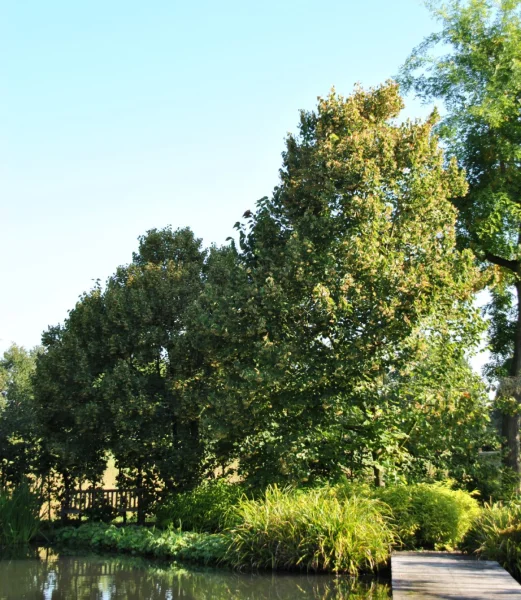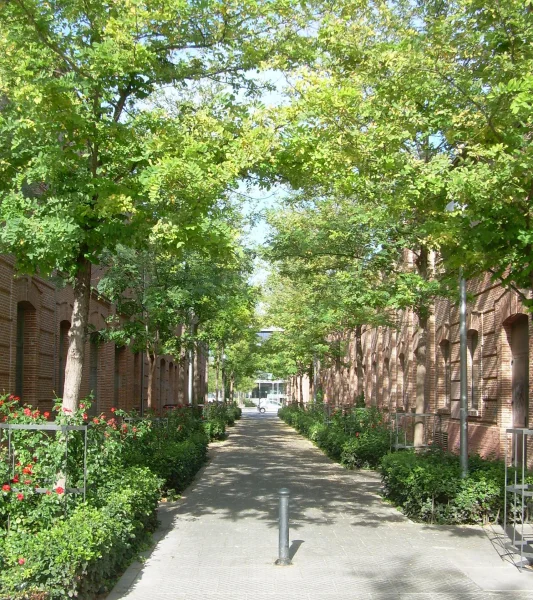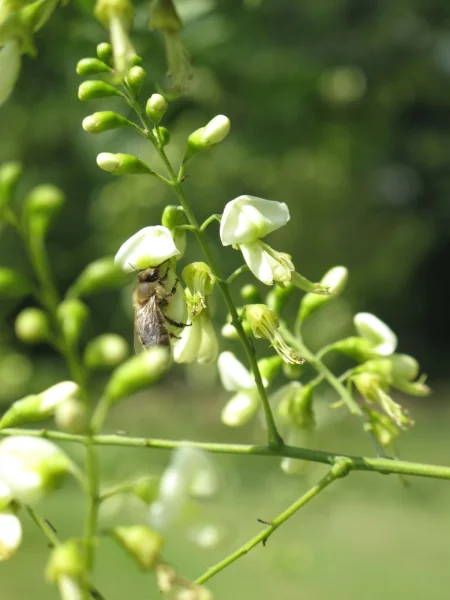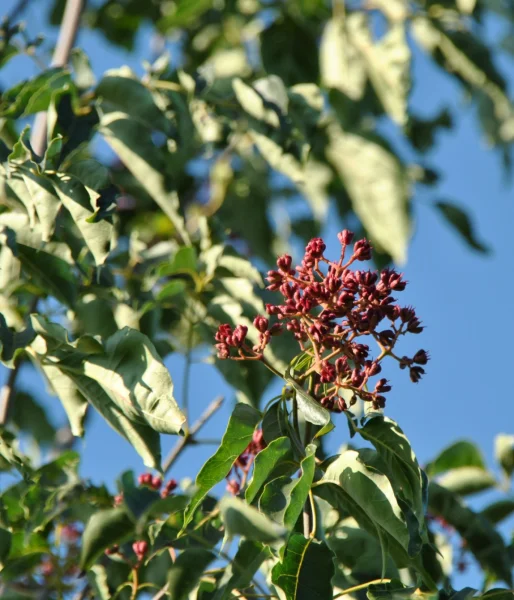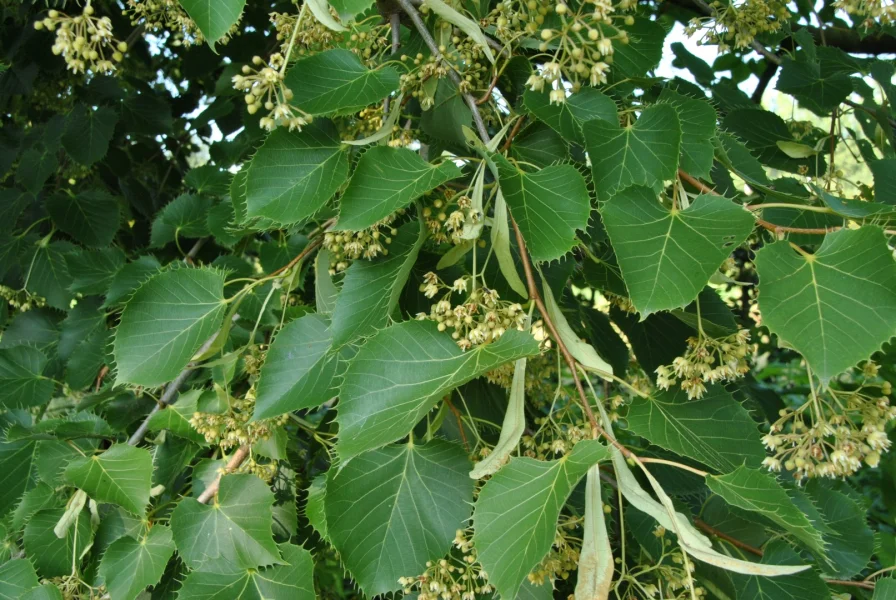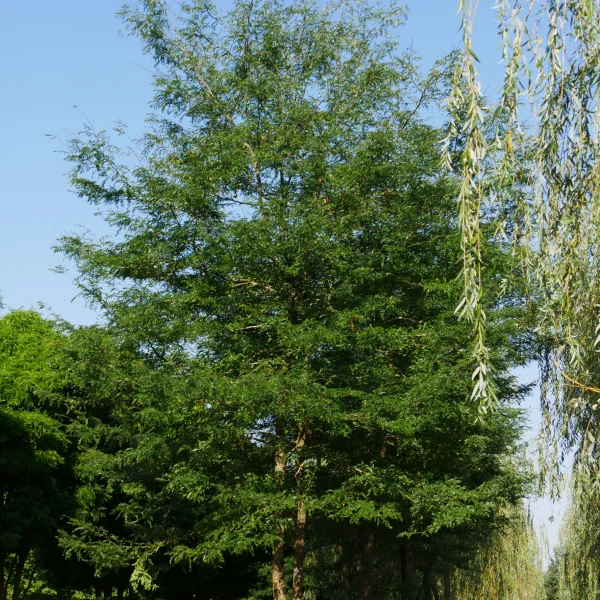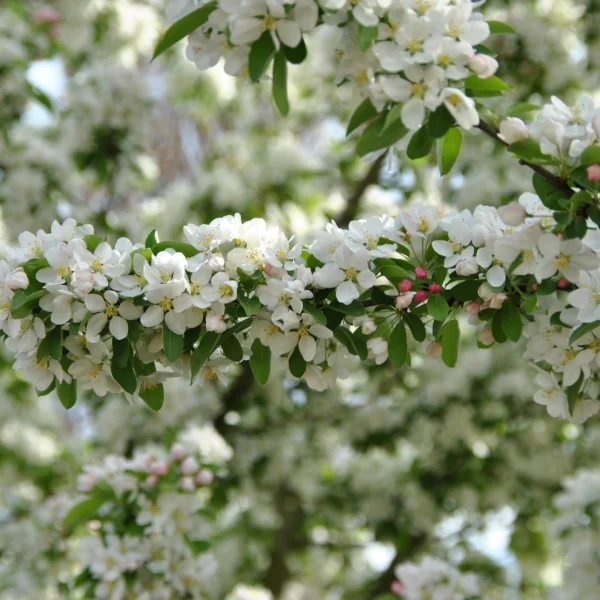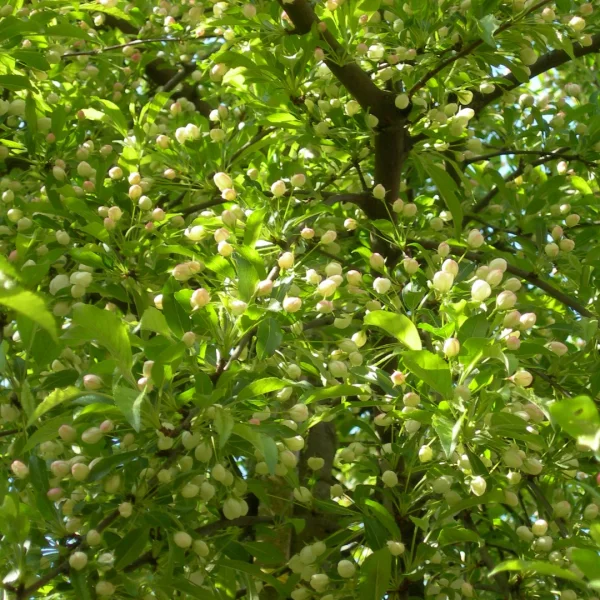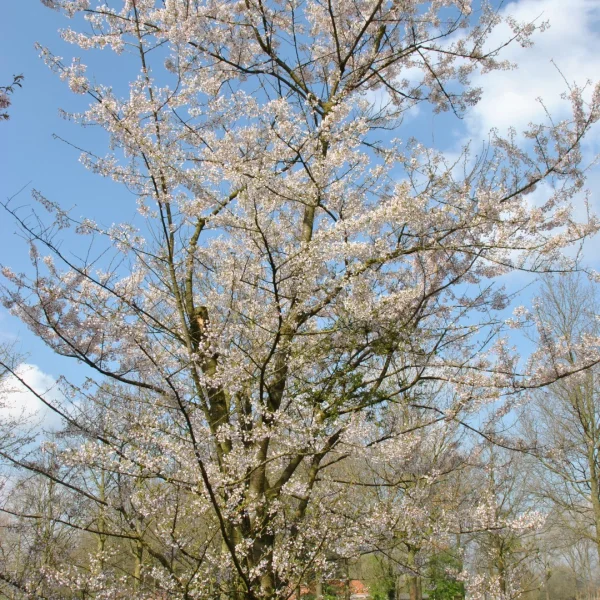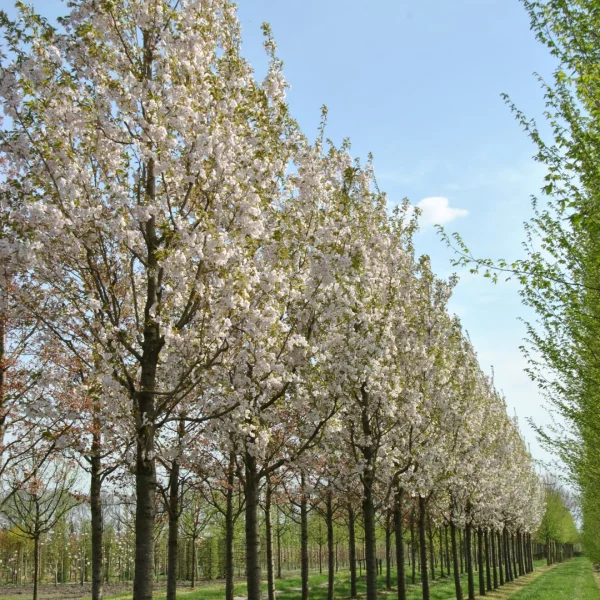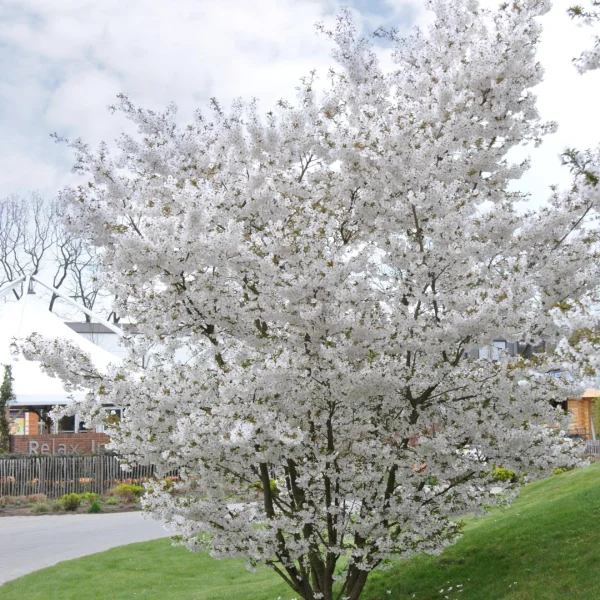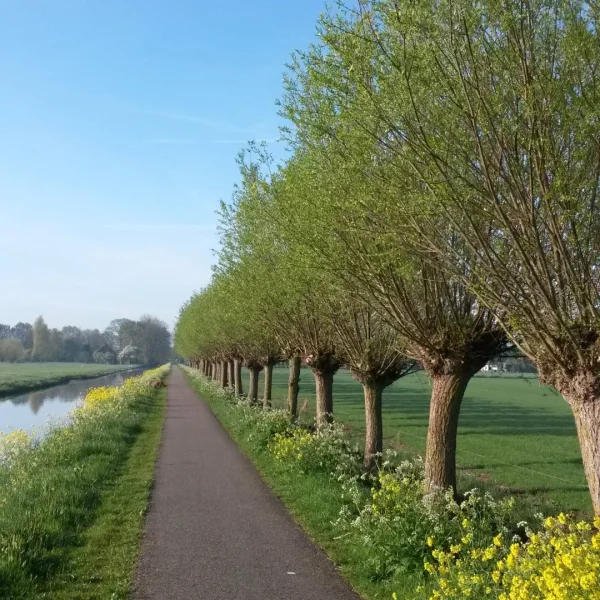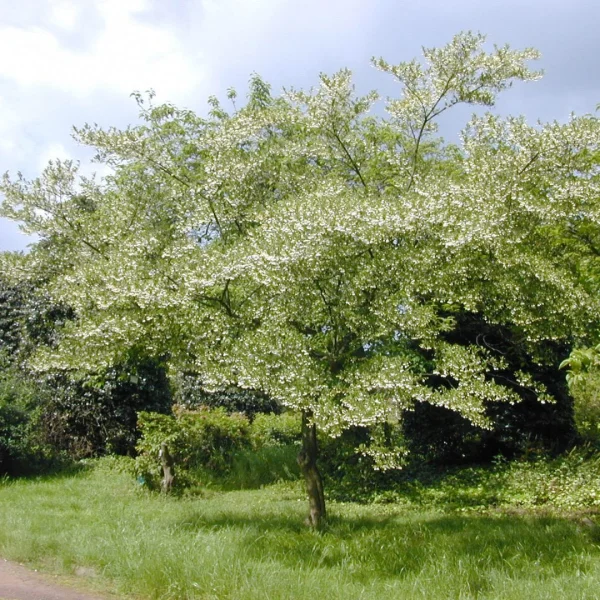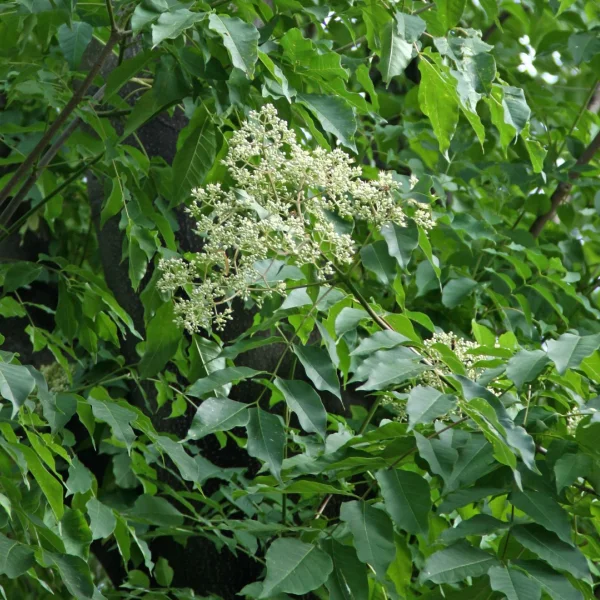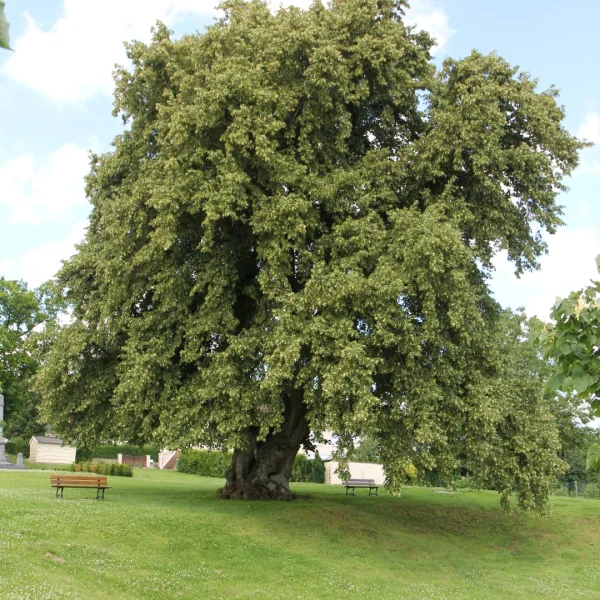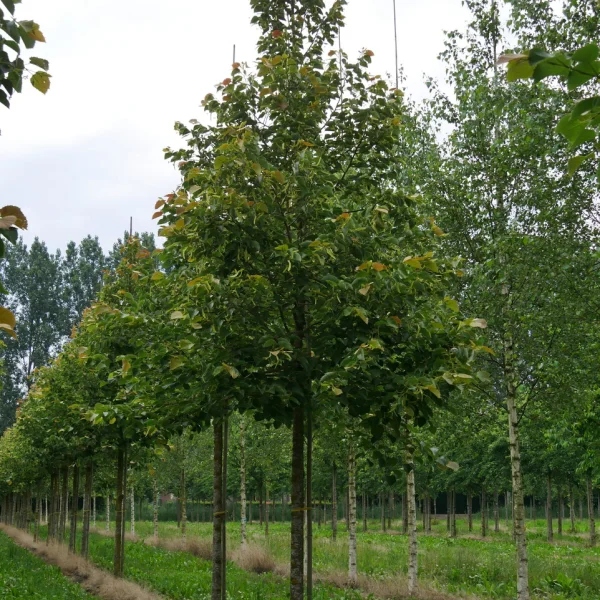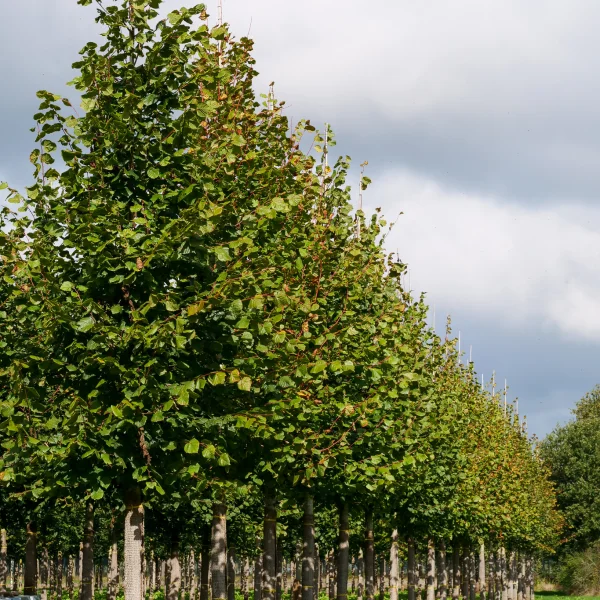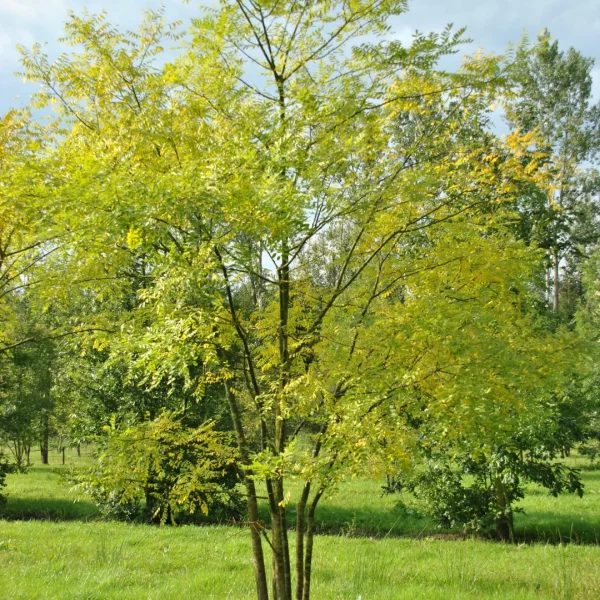Bees play a very important role in our food chain so these days a lot of attention is being paid to these diligent creatures. The planting of trees that supply bees with their food, known as honey plants, is therefore popular and has, in fact, become necessary. In order of flowering time, a few excellent species are willow, maple, horse-chestnut, acacia and linden. These trees provide high levels of pollen and nectar that bees need for their existence. There are also countless other species and, of course, we must not forget fruit trees either. In gardens, ornamental fruit trees may be an interesting choice, although it is important to realise that species that have double or filled flowers, such as many decorative Japanese cherry trees, do not produce nectar or pollen, whereas the species and varieties with single flowers do.
Large trees give more to bees
If a honey plant is to produce good nectar and pollen, it is important that the growing circumstances are right and that there is sufficient water in the weeks before and during flowering. This keeps the nectar flowing freely. Trees that have reached a certain stage of maturity and have a substantial crown flower the most and are therefore the richest source of nectar and pollen. It is also important that there are enough honey plants available during the flying season, which lasts from March to October. Many honey plants flower in spring or summer, but as the year progresses, the flowering varieties become more and more limited. There are a few species which still bear the occasional flower until into September and these are visited by huge numbers of bees. The best known, and appropriately named ones, are the honey tree (Styphnolobium/Sophora) and the bee-bee tree (Tetradium). Click here download the "Trees for bees calendar"
Honey plants are vital
Mankind likes making use of bees. We do not always realise it but it is thanks to their efforts that we are able to enjoy such a wide range of food products. Around 30% of our daily food requirements depends on bees. Without bees there would be no apples, pears, walnuts, almonds, courgettes or capsicums and we could forget our daily cup of coffee too.
However, honey bees are going through very difficult times due to the Varroa destructor, a millimetre long parasite, large numbers of which have been weakening the colonies since the early eighties. In addition, bees have faced a reduction in food as a result of urbanisation and a huge decline of available countryside. The use of insecticides and fungicides has also caused a reduction in the bee population. Fields and meadows offer little in the way of food as herbicides have destroyed many useful plants, leaving behind fields of grass and flowerless corn and grain
 English
English
 English (United Kingdom)
English (United Kingdom)
 Nederlands
Nederlands
 Nederlands (België)
Nederlands (België)
 Deutsch
Deutsch
 français
français
 čeština
čeština
 polski
polski
 español
español
 română
română
 dansk
dansk
 svenska
svenska
 magyar
magyar
 Türkçe
Türkçe
 slovenčina
slovenčina
 русский
русский
